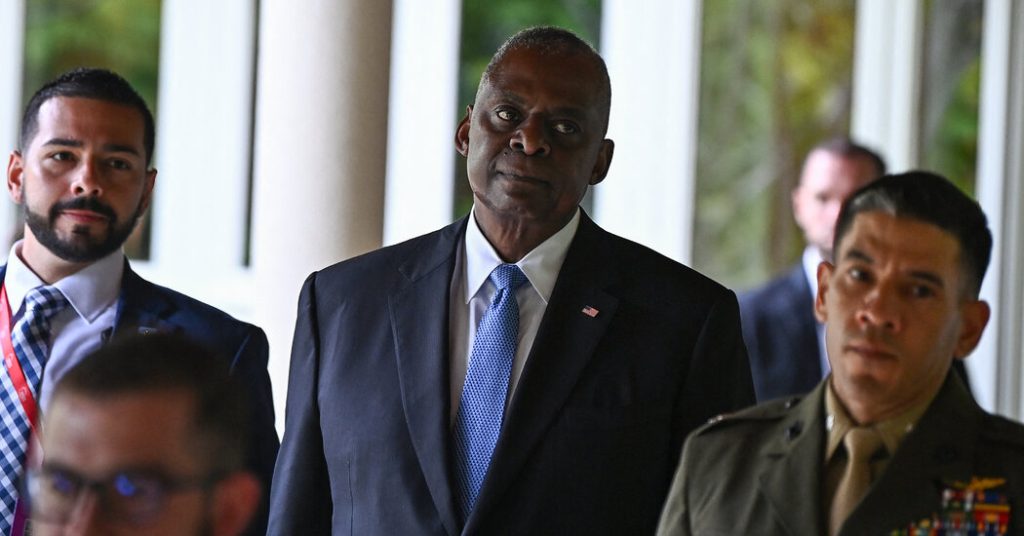The U.S. Secretary of Defense, Lloyd J. Austin III, and China’s Minister of Defense, Adm. Dong Jun, recently held face-to-face talks in Singapore, marking their first meeting in 18 months. The talks took place amidst ongoing tensions over issues such as Taiwan, the South China Sea, and other regional disputes. Despite attempts to maintain open communication channels between the two nations, military issues have remained a significant source of tension between the United States and China, with limited expectations for significant outcomes from the meeting.
The longstanding military rivalry between the two powers is deeply rooted in unresolved disputes, including China’s claim to Taiwan and its assertive claims over the South China Sea. Adm. Dong, who became defense minister late last year, is perceived as lacking the power to make important strategic decisions, raising questions about the potential for progress in resolving these tensions. The United States, however, may view the talks as an opportunity to demonstrate a willingness to engage in dialogue with China, despite their differences.
The Pentagon has been focused on supporting Ukraine and managing risks in the Middle East, but views China’s growing military prowess as a significant long-term challenge. Chinese military aircraft and ships have exhibited increasingly aggressive behavior towards American military vessels and aircraft, prompting concerns about possible incidents that could escalate into a crisis. Mr. Austin may seek clarification from Adm. Dong on ways to prevent such mishaps, possibly including establishing communication links between relevant military commands.
The United States and China have differing perspectives on military behavior in the region, with Chinese officials rejecting the notion that their actions are destabilizing and questioning the rights of other countries to operate close to their shores. Beijing may be reluctant to commit to stricter rules governing encounters between military forces, fearing that it could provide an opening for increased American presence near its coastlines. The United States, with its significantly larger military budget, continues to maintain a strong global military presence, while China focuses on projecting power in Asia.
Adm. Dong is expected to reiterate China’s opposition to continued U.S. support for Taiwan, particularly in the form of arms sales, during the talks. Previous discussions between U.S. and Chinese defense officials have not resulted in significant breakthroughs, with limited progress seen as a key indicator of success. The meeting in Singapore represents another opportunity for both sides to exchange their well-established positions and maintain a dialogue on military issues, despite the challenges that remain unresolved.
Overall, the talks between the U.S. and Chinese defense officials in Singapore serve as a continuation of efforts to address longstanding military tensions between the two nations. While progress may be slow and limited, the willingness of both sides to engage in discussions is a positive sign of diplomatic efforts to prevent potential clashes between their powerful military forces. The meeting underscores the complex dynamics of the U.S.-China relationship, with military issues remaining a key focus area for ongoing dialogue and negotiations.








